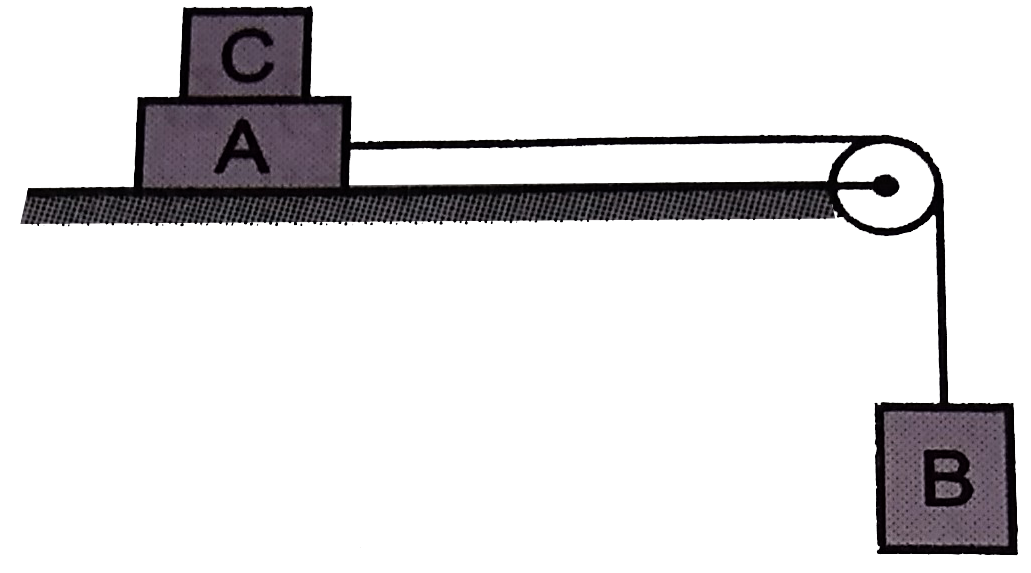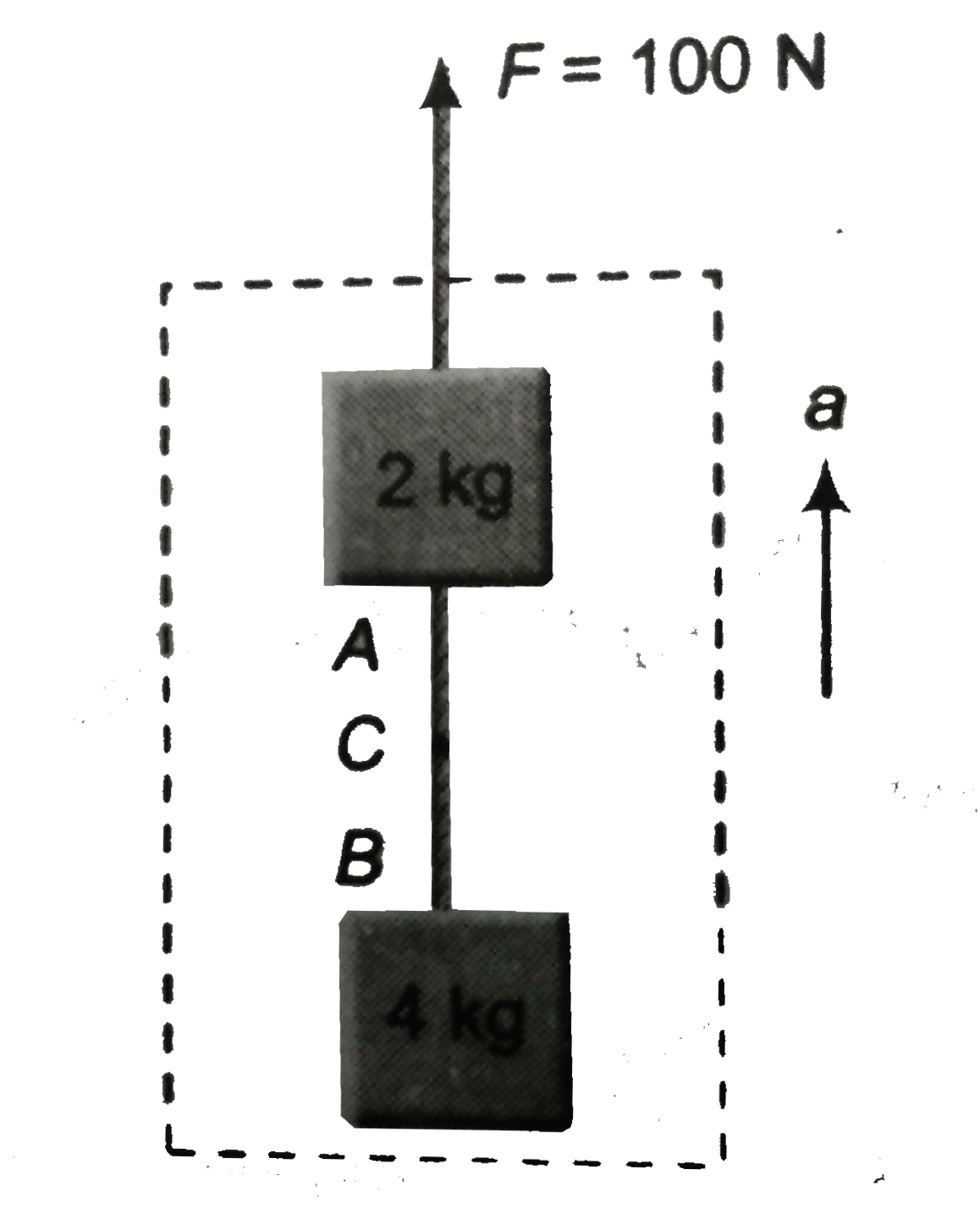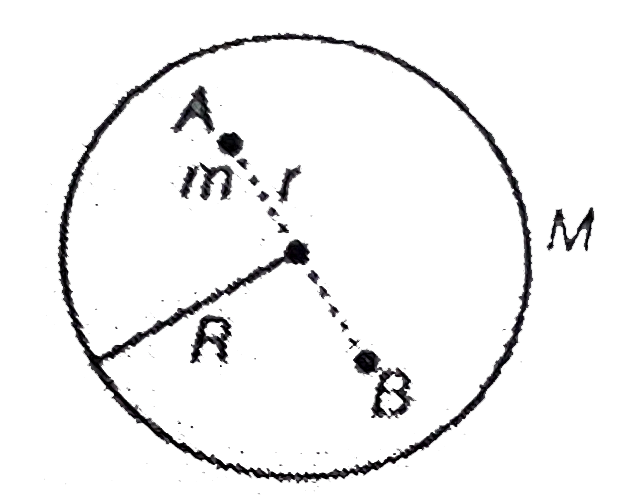In the figure masses 400kg and 100kg are fixed.

(a) How much work must be done to move a 1kg mass from point A to point B?
(b) What is the minimum kinetic with which the 1kg mass must be projected from A to the right to reach the point B?
The correct Answer is:A, B
W=Uf−Ui=UB−UA
=mVB−mVA (V= gravitational potential)
=m(VB−VA)
=(1)[−1002−4008+1008+4002](6.67×10−11)
=7.5×10−9J
(b) First let us find the point (say) c between A and B where field strength due to 400kg and 100kg masses is zero. Let its distance from 400kg is r.
Then, G(400)r2=G(100)(10−r)2
r=203m and (10−r)=103m
So, we have to move the body only from A to C. After that 100kg mass will pull 1kg mass by its own.
∴ Minimum kinetic energy =ΔU=UC−UA
=m(VC−VA)
=(1)[−40020/3−10010/3+1008+4002](6.67×10−11)
=8.17×10−9J
Topper's Solved these Questions
- BOOK - DC PANDEYCHAPTER - GRAVITATIONEXERCISE - Level 2 Single Correct22videos
GRAVITATION
- BOOK - DC PANDEYCHAPTER - GRAVITATIONEXERCISE - Level 2 More Than One Correct10videos
GRAVITATION
- BOOK - DC PANDEYCHAPTER - GRAVITATIONEXERCISE - Level 1 Single Correct27videos
GRAVITATION
- BOOK - DC PANDEYCHAPTER - GENERAL PHYSICSEXERCISE - INTEGER_TYPE2videos
GENERAL PHYSICS
- BOOK - DC PANDEYCHAPTER - KINEMATICSEXERCISE - INTEGER_TYPE11videos
KINEMATICS
Similar Questions
Two masses A and B of mass 15kg and 6kg are connected by a string passing over a friction pulley fixed at the corner of a table as shown in The coefficient of friction between A and table is 0.3 the minimum mass (in kg) of that must be placed on A to prevent it from moving is
 .View Solution
.View SolutionIn the given figure mass of string AB is 2kg. Find tension at A,B and C, where C is the mid point of string.
 View Solution
View Solution
Knowledge Check
- Question 1 - Select One
A point mass of 10 kg is placed at the centre of earth. The weight of the point mass is
AzeroB98NC49ND38N - Question 2 - Select One
There is a shell of mass M and density of shell is uniform. The work done to take a point mass from point A to B is (AB=r)
 AGmMrBGmMRC−GmMrDzero
AGmMrBGmMRC−GmMrDzero - Question 3 - Select One
There is a shell of mass M and density of shell is uniform. The work done to take a point mass from point A to B is (AB=r)
 AGmMrBGmMRC−GmMrDzero
AGmMrBGmMRC−GmMrDzero
In the above problem find the work done is shifting of mass 1kg from origin (0,0) to a point (5 ,4) (In J) .
View SolutionA 4 kg mass and 1 kg mass are moving with equal linear momenta.The ratio of their kinetic energies is
View SolutionMasses 8 kg and 2 kg are 18 cm apart. The point where the gravitational field due to the masses is zero is
View SolutionTwo masses, 800kg and 600kg are at a distance 0.25m apart. The magnitude of total force experienced by a body of mass 1kg placed at a point distance 0.2m from the 800kg mass 0.15m from the 600kg mass :
View SolutionA ball of mass 1 kg carrying a charge 10−8C moves from a point A at potential 600 V to a point B at zero potential. The change in its kinetic energy is
View Solution

